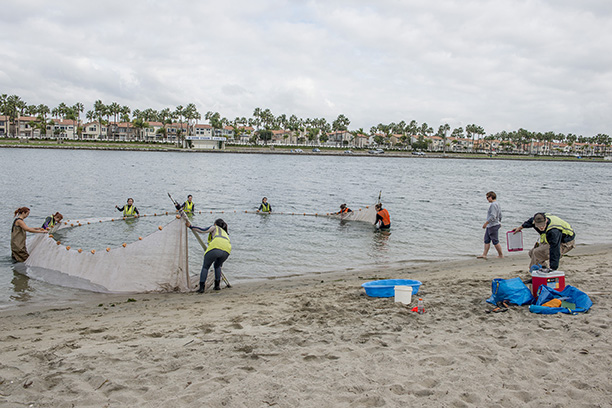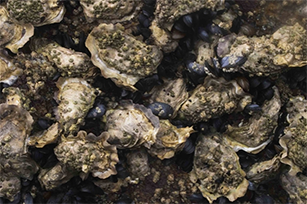Latest Projects
As you probably have read by now, we are interested in
documenting how human activities impact the structure and
functioning of wetlands - specifically brackish and
coastal wetlands. You can read about our past and present
projects on this site and on the current
lab member page.
Fish and bird use of an urban wetlands
Development around coastal wetlands often leads to
changes in nursery and foraging functions. We have
several projects (with the Shark Lab at
CSULB) looking at fish use using acoustic and PIT
tagging and at bird nesting success.
Monitoring the impacts of sediment augmentation
Sea level rise (SLR) threatens many of our coastal
wetlands. One strategy to deal with SLR is thin layer
sediment augmentation. As part of a team, we are
monitoring the impacts of augmentation at Seal
Beach National Wildlife Refuge.
Restoration trajectory and success
A significant portion of CA wetlands have been lost or
degraded. One strategy for dealing with this loss is
restoration. Several projects (SD
salt ponds, Huntington
Beach Wetlands, Colorado Lagoon,
Upper
Newport Bay) evaluate best restoration techniques,
metrics, analytical techniques and functional
equivalence.
Impacts of non-native plants and animals
Non-native species are moved around the world by
human activities, and once established often have
negative impacts of local ecosystems (invasive
species). Among many species, we are evaluating the
impacts of tamarisk, perennial pepperweed, yellow flag
iris, marsh lavender, and an isopod.
Impacts of sea level rise (SLR) and climate change
SLR and climate change (increasing temperature, altered
precipitation) are predicted to have dramatic impacts on
coastal ecosystems. We have several manipulative
experiments quantifying the impacts to structure and
function of decomposer communities and decomposition
rates.
Restoration of oysters and eelgrass
Native Olympia oysters were historically present in
southern California, but their numbers dropped due to
habitat loss and exploitation. With CSU Fullerton and Orange County
Coastkeeper, we are evaluating restoration
techniques to restore native oysters in conjunction with
restoring eelgrass habitat.
Monitoring framework for estuarine Marine Protected
Areas (EMPAs)
Protecting our valuable estuarine habitats is a key
priority for coastal regions. Yet, we often lack a
unified framework for exactly how to monitor the
condition of these systems. As part of a collaborative
team, we have been monitoring 5 southern CA wetlands for
a variety of parameters (plants, invertebrates, fish,
abiotic conditions).


